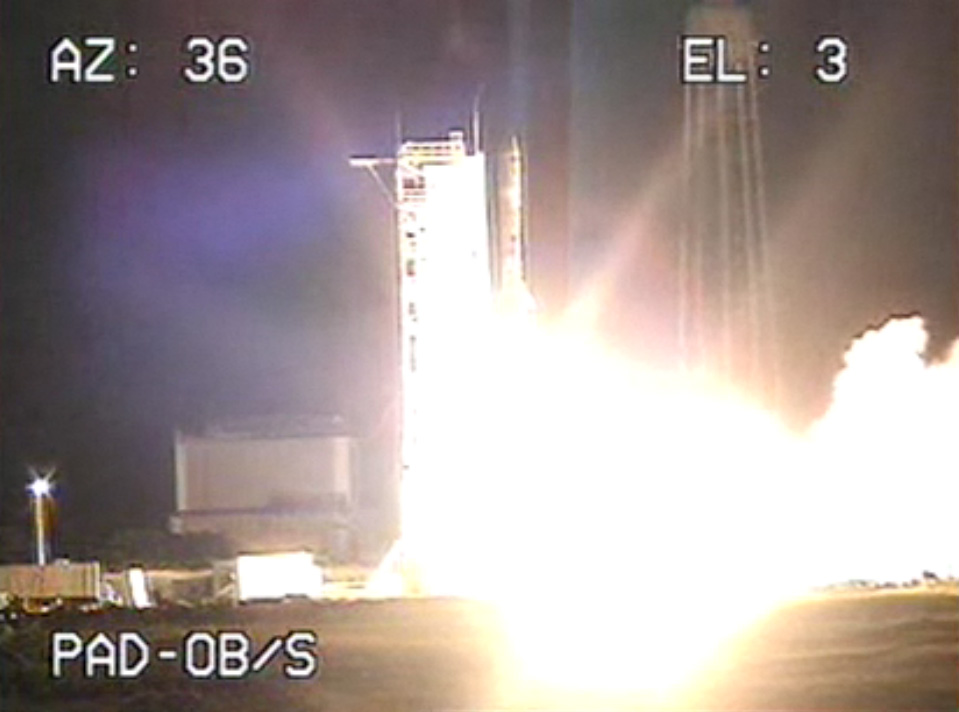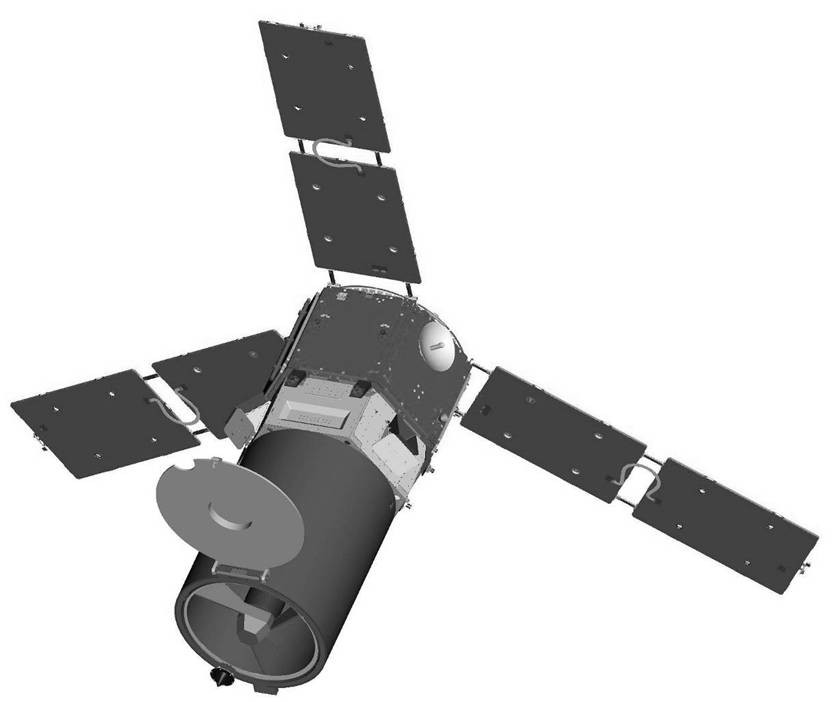Air Force Rocket Launches New Tactical Military Satellite

This story was updated at 8 a.m. ET, June 30.
The United States Air Force successfully launched a new battlefield reconnaissance satellite Wednesday night (June 29), a spacecraft designed to deliver fast and accurate images and information to American soldiers on the ground.
The ORS-1 satellite blasted off atop a Minotaur 1 rocket at 11:09 p.m. EDT (0309 GMT) from NASA's Wallops Flight Facility and Mid-Atlantic Regional Spaceport on Wallops Island, Va. The rocket launch lit up the late-night sky, with reports of skywatchers seeing the Minotaur 1 rocket from hundreds of miles away, including sightings from New York City and Washington, D.C.
"Go! Go! Go! Minotaur 1 is away with the #ORS1 satellite over the Atlantic!" officials at Wallops Flight Facility wrote in a Twitter message just after launch. [Video: Minotaur 1 Rocket Streaks Into Night Sky]
The launch was originally slated for Tuesday evening, but bad weather thwarted that attempt. Yet, while the weather cooperated Wednesday, things didn't go completely smoothly leading up to liftoff.
Engineers first had to troubleshoot a problem with the satellite's launch support equipment. Then they fixed an issue with the Minotaur's flight termination system, which would have been called upon to destroy the rocket if something had gone wrong during flight.
Breaking space news, the latest updates on rocket launches, skywatching events and more!
Together, these glitches caused a 2 1/2-hour delay, pushing the launch nearly to the very end of ORS-1's window. But the fixes worked, and ORS-1 finally soared toward the heavens.
"We are very pleased to continue our support to the U.S. Air Force and the Operationally Responsive Space Office (ORS) with today’s successful launch," said NASA's Wallops facility director Bill Wrobel in a statement. "This is the fourth Minotaur 1 launch from Wallops since December 2006 and we look forward to collaborating with the Air Force and ORS on future projects."
Eagle eye in the sky
The $226 million ORS-1 spacecraft is the first operational satellite created by the Air Force's Operational Responsive Space Office (hence the satellite's name). The spacecraft went from design and development to orbit in just 32 months, officials said.
ORS-1 is outfitted with a customized version of a sensor called SYERS-2, high-tech snooping gear that's also carried by the Air Force's venerable U-2 spy planes. [Top 10 Space Weapons]
SYERS-2 provides high-resolution imagery day and night across seven different wavelength bands, according to its manufacturer, the Goodrich Corporation. The sensor can peer through haze and light fog. The information it gathers will be beamed down to Earth, where analysts will study it to improve warfighters' situational awareness nearly in real time.
ORS-1's reconnaissance mission is slated to last one to two years. But it won't begin immediately; the satellite will first undergo a month-long checkout, validation and calibration procedure, Air Force officials have said.
No sunset launch
Wednesday's launch was originally planned for 8:28 p.m. EDT (0028 GMT), raising the prospect of a gorgeous sunset spectacle for many skywatchers throughout the eastern United States.
Sunset rocket launches out of California's Vandenberg Air Force Base have left long, glowing contrails seen for hundreds of miles out into the desert. However, fixing the two glitches nixed a similarly dramatic show in this case, pushing ORS-1's liftoff back into darkness.
You can follow SPACE.com senior writer Mike Wall on Twitter: @michaeldwall. Follow SPACE.com for the latest in space science and exploration news on Twitter @Spacedotcom and on Facebook.

Michael Wall is a Senior Space Writer with Space.com and joined the team in 2010. He primarily covers exoplanets, spaceflight and military space, but has been known to dabble in the space art beat. His book about the search for alien life, "Out There," was published on Nov. 13, 2018. Before becoming a science writer, Michael worked as a herpetologist and wildlife biologist. He has a Ph.D. in evolutionary biology from the University of Sydney, Australia, a bachelor's degree from the University of Arizona, and a graduate certificate in science writing from the University of California, Santa Cruz. To find out what his latest project is, you can follow Michael on Twitter.

